Nothing feeds the heart like the passion-filled pages of a love story. In 1,000 Books to Read Before You Die, author James Mustich explores an eclectic collection of books of many genres to satisfy readers of all varieties, and with that, of course, comes romance. If you’re looking to pursue a solo ignition of internal thoughts and feelings, or eager to explore the words of timeless love with a partner, we’ve got you covered with four of his unforgettable recommendations.
1. Pride and Prejudice by Jane Austen.
There is no better place to start than with this beloved and entertaining classic from the author credited with “Inventing the romantic comedy”:
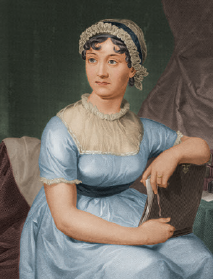 Inventing the romantic comedy, in the most expansive meanings of both those words, Austen shaped the popular imagination in a way few writers have ever done. In a reading history of the world, Elizabeth Bennet, the heroine who overcomes her initial prejudice to conquer the heart of Mr. Darcy, may well be a more lively and influential model than Achilles or Quixote. While the seeds of the species of love story that Jane Austen planted have grown like kudzu—you can’t turn on the television or go to the movies without seeing her shadow in the undergrowth—her own tending of them still makes her books the most enchanting of cultivated gardens, in which ordinary life, foolish attachments, and the hesitations of hope in which we live are rendered delicate and beautiful—and yes, capable of a moment’s happiness. What Jane Austen teaches us is how much a life of feeling, however small and circumscribed, matters to the feeler—and, through the vital etiquette of her art, to readers as well.
Inventing the romantic comedy, in the most expansive meanings of both those words, Austen shaped the popular imagination in a way few writers have ever done. In a reading history of the world, Elizabeth Bennet, the heroine who overcomes her initial prejudice to conquer the heart of Mr. Darcy, may well be a more lively and influential model than Achilles or Quixote. While the seeds of the species of love story that Jane Austen planted have grown like kudzu—you can’t turn on the television or go to the movies without seeing her shadow in the undergrowth—her own tending of them still makes her books the most enchanting of cultivated gardens, in which ordinary life, foolish attachments, and the hesitations of hope in which we live are rendered delicate and beautiful—and yes, capable of a moment’s happiness. What Jane Austen teaches us is how much a life of feeling, however small and circumscribed, matters to the feeler—and, through the vital etiquette of her art, to readers as well.
2. The Poems of Catullus by Gaius Valerius Catullus.
No genre is quite as romantic, or speaks to love and its many layers, like poetry. Explore the intricacies of the heart and “love’s life-cycle” with these engaging and heartfelt poems:
A contemporary of Cicero and Julius Caesar, Catullus created a small body of work that has survived as long as—and more vividly than—the grand political passions of those two estimable men. The poet’s more than one hundred carmina are a mixture of short lyrics, epigrammatic verses, and a handful of lengthier (and generally less interesting) poems. Catullus’s primary subject is love, or more properly, the course of infatuation, negotiation, yearning, pleasure, disaffection, heartache, and despair that is love’s life cycle. Distinctive, acute, clever, and conversational, the voice that animates his best lines rings clear in modern ears:
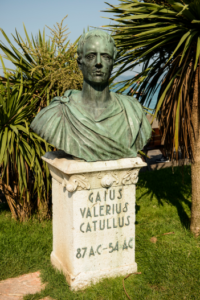
Photo credit: flickr.com
I hate and love. If you ask me to explain
The contradiction,
I can’t, but I can feel it, and the pain
Is crucifixion.
Catullus might be said to have invented the tone of self-lacerating desire and angry ardor that runs through centuries of literary lamentations (and can even be heard echoing in popular songs—think of Rodgers and Hart’s “I Wish I Were in Love Again”). Whether ecstatic with erotic impulse or keen with invective, Catullus’s bursts of feeling are always articulated with sophisticated intelligence. His poems’ intricate construction and devilishly alert self-consciousness turn everything they express, whether ribald insult or tender grief, into indelible verse. As Anne Carson, writing of Catullus’s elegy for his brother, put it, “No one (even in Latin) can approximate the Catullan diction, which at its most sorrowful has an air of deep festivity, like one of those trees that turns all its leaves over, silver, in the wind.” Even in translation, though, the leaves retain their allure.
3. The Wilder Shores of Love by Lesley Blanch.
This biography of four nineteenth century women who pursue adventure and love in the Middle East examines different approaches to love while highlighting the depth and versatility of meaning found within this powerful emotion: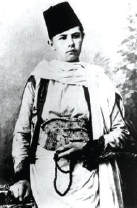
Adventure presents itself more often than we acknowledge, and in many guises: as accident, as disaster, as longing, or as love. What distinguishes adventurers from the rest of us is the courage that compels them to take up the reins when excitement beckons and ride where it leads without any map. The four nineteenth century women profiled in this book were adventurers indeed, following their hearts, misfortunes, and desires right out of their own time and place, into an East that promised fruits forbidden in their native Europe. […] “Each of them, in her own way,” Blanch writes, “used love as a means of individual expression, of liberation. . . .” In an exotic landscape, far across the borders of the manners and mores of their age, these women—lured onward by “glowing horizons of emotion and daring”—imagined unconventional destinies, and for both good and ill, embraced them. Blanch relates their lives with intelligence and captivating sympathy.
4. Are You There God? It’s Me, Margaret. by Judy Blume.
While not a conventional love story, this last selection is an explorative novel that navigates the challenges of youth, and focuses on the power of identity, self-discovery and self-love:
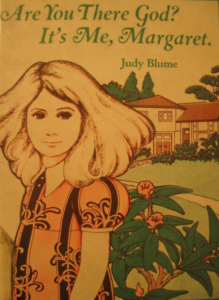
Photo credit: flickr.com
While these subjects may seem tame today, they weren’t back then. Nonetheless, it’s not the topical bravery of Blume’s book that delivers its real distinction, but rather a deeper insight that she gives expression to through Margaret’s diary and prayers: that the urgent secrets of adolescence are not rebelliousness and precociousness, but timidity and confusion. By making her book not an escape from these anxious states, but rather a stage for their articulation, Blume gave both Margaret and countless other preteen readers an agency that was a form of liberation, a license to explore the interiority that is at the heart of growing up—and of reading, too. Teaching kids to recognize the value of their inner voice when all the outer ones are shouting more loudly is no small gift, which explains in part why Blume’s book is so beloved. Its influence on the minds of readers may be as deep as that of any book published in its era, and the many shelves of diary fiction that are produced each year are a tribute to its lasting influence on our collective imagination.
*Excerpted from 1000 Books to Read Before You Die by James Mustich.
More about 1,000 Books to Read Before You Die:
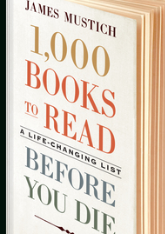 “The ultimate literary bucket list.” —The Washington Post
“The ultimate literary bucket list.” —The Washington Post
Celebrate the pleasure of reading and the thrill of discovering new titles in an extraordinary book that’s as compulsively readable, entertaining, surprising, and enlightening as the 1,000-plus titles it recommends.
Covering fiction, poetry, science and science fiction, memoir, travel writing, biography, children’s books, history, and more, 1,000 Books to Read Before You Die ranges across cultures and through time to offer an eclectic collection of works that each deserve to come with the recommendation, You have to read this. But it’s not a proscriptive list of the “great works”—rather, it’s a celebration of the glorious mosaic that is our literary heritage.
Buy the Book
Amazon | B&N | Indiebound | Workman


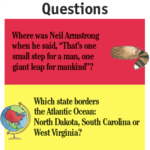
No Comments